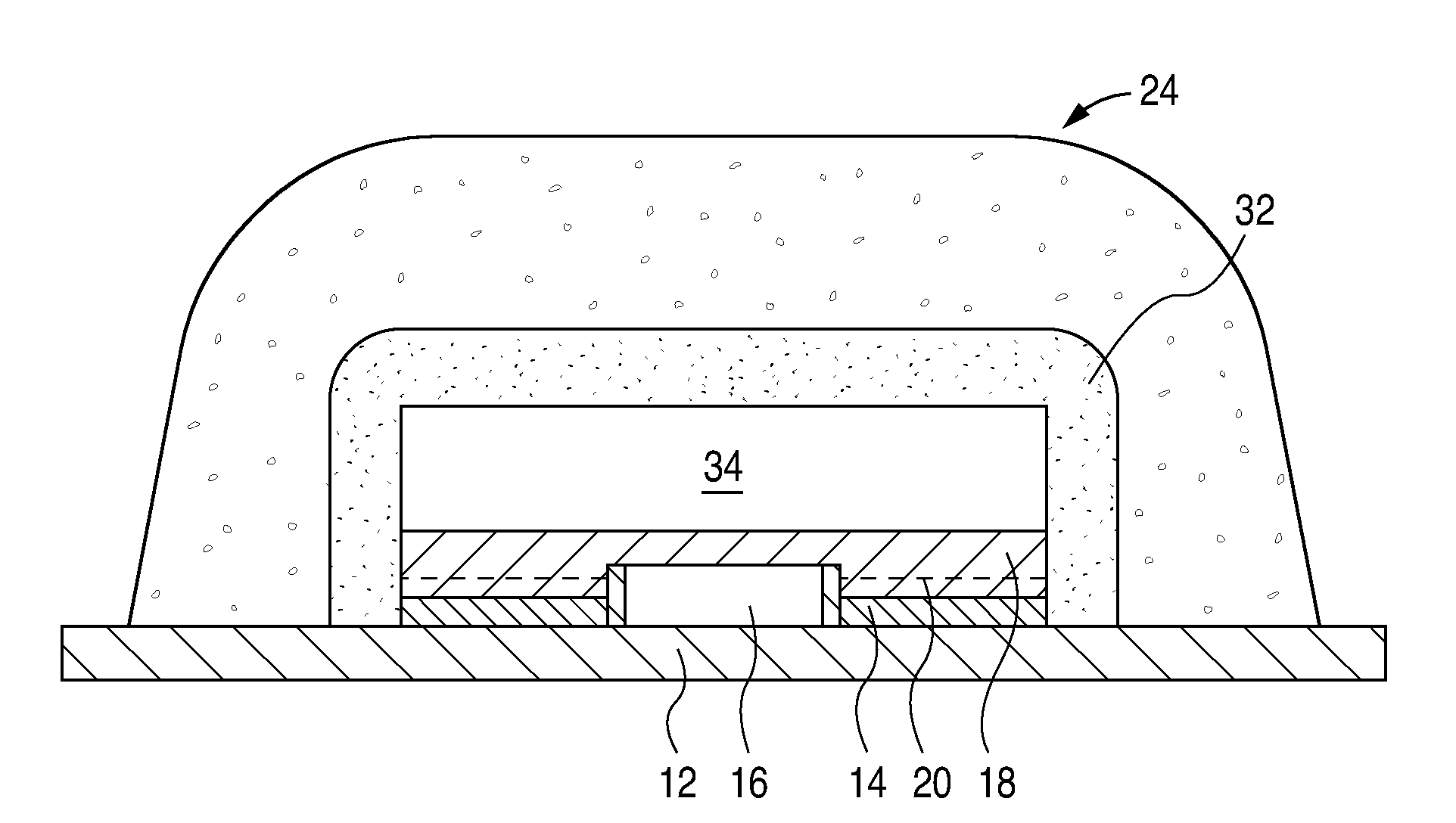Phosphor converted light emitting device
a light-emitting device and phosphor-converting technology, applied in the direction of basic electric elements, chemistry apparatus and processes, and light-emitting compositions, can solve the problem that white light-emitting devices typically have undesirable color rendering properties
- Summary
- Abstract
- Description
- Claims
- Application Information
AI Technical Summary
Benefits of technology
Problems solved by technology
Method used
Image
Examples
example i
[0044]FIGS. 3 and 4 show the excitation and emission spectra of LaOCl:Eu. In FIG. 3, the maximum intensity in the wavelength range between 460 nm and 470 nm is about 21% of the maximum intensity in the wavelength range between 220 nm and 320 nm. In FIG. 4, the peak area in the wavelength range between 680 nm and 720 nm is 22% of the peak area in the wavelength range between 570 nm and 720 nm.
example ii
[0045]FIGS. 5 and 6 show the excitation and emission spectra of Sr3In2Ge3O12:Eu. In FIG. 5, the maximum intensity in the wavelength range between 460 nm and 470 nm is about 25% of the maximum intensity in the wavelength range between 220 nm and 320 nm. In FIG. 6, the peak area in the wavelength range between 680 nm and 720 nm is 25% of the peak area in the wavelength range between 570 nm and 720 nm.
example iii
[0046]FIGS. 7 and 8 show the excitation and emission spectra of Y2SiO5:Eu. In FIG. 7, the maximum intensity in the wavelength range between 460 nm and 470 nm is about 11% of the maximum intensity in the wavelength range between 220 nm and 320 nm. In FIG. 8, the peak area in the wavelength range between 680 nm and 720 nm is 21% of the peak area in the wavelength range between 570 nm and 720 nm.
PUM
| Property | Measurement | Unit |
|---|---|---|
| wavelength | aaaaa | aaaaa |
| wavelength | aaaaa | aaaaa |
| wavelength | aaaaa | aaaaa |
Abstract
Description
Claims
Application Information
 Login to View More
Login to View More - R&D
- Intellectual Property
- Life Sciences
- Materials
- Tech Scout
- Unparalleled Data Quality
- Higher Quality Content
- 60% Fewer Hallucinations
Browse by: Latest US Patents, China's latest patents, Technical Efficacy Thesaurus, Application Domain, Technology Topic, Popular Technical Reports.
© 2025 PatSnap. All rights reserved.Legal|Privacy policy|Modern Slavery Act Transparency Statement|Sitemap|About US| Contact US: help@patsnap.com



